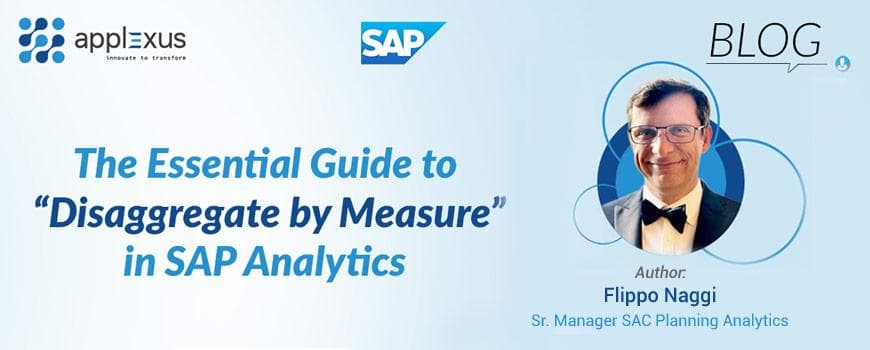Trusted Data and Analytics in Today’s Age of Major Digital Transformations. How Crucial is It?
07 August 2023


Ratan Verma
Practice Head - Data ManagementRatan Verma, Practice Head - Data Management brings a wealth of experience in Information Management and Data Privacy domains, advising CIOs/CDOs, and helping to set up...
Data serves as a fundamental raw material, akin to oil, which requires refining to unlock its true value. Similar to oil, data can be vulnerable and lead to unexpected risks., if used recklessly. The growth of companies like Google and Amazon can be attributed to their ability to leverage data and analytics effectively to create value. The key to their success lies in establishing robust initiatives and practicing responsible data management, all while aligning with the company's strategic goals.
Data quality matters quite a bit and there is still work to do. Only 43% of business and technology management professionals are somewhat confident in their data, and 25% are concerned - Forrester Consulting[1]
By treating data as the foundation for growth, these companies harnessed the full potential of data, turning it into a valuable asset that propels growth. However, in today's digital age, trust too is paramount in the Data and Analytics landscape (D&A). Trust isn’t just limited to a company's brand, products, services, and people; it extends to how you handle and utilize data. To maintain trust across the data spectrum, companies must emphasize data security, transparency, and responsible usage.
How Does Trust Factor into Your Data and Analytics Chain?

Trust plays an indispensable role in determining the success or failure of organizations. Trust at the core of your data practices improves operational efficiency, reduces uncertainty, increases resilience, enhances company reputation, and strengthens employee morale. As machines and humans coexist even more in the D&A space, it becomes imperative to proactively govern analytics to stimulate trust. However, who should bear the responsibility for enforcing trusted analytics?
Amid the ongoing digital transformation, where AI permeates nearly every industry, it is essential to assign ownership for the quality, effectiveness, integrity, and resilience of analytics.
Trusted analytics should not be vague; instead, companies need definite strategies and streamlined processes that serve to optimize trust. Companies must prioritize trust-building measures, involving rigorous frameworks that govern data usage, ensuring integrity, and safeguarding against potential risks.
Trust is not an abstract notion; it is a pivotal element for companies seeking to flourish in the data-powered future. Trust acts as a currency that builds more confidence amongst stakeholders and eases their decision-making processes. By optimizing data practices for trust, organizations navigate the complexities of the data estate and position themselves for long-term success in an AI-driven world.
Why do Senior Executives Exhibit a Trust Gap?
Trust in data and analytics is a crucial aspect that impacts the professional and personal lives of all people. This means having the assurance that the data and analytics in place are reliable and that they are promptly notified when any inaccuracies occur or the outcomes deviate from the intended target. Transparency is essential, and they want to be alerted when something goes wrong. Moreover, they prefer data to be utilized by individuals they trust and for purposes that they consider valuable.
Initially, trust issues were relatively straightforward, often arising when management encountered unreliable data or inferior insights, leading to diminished trust in the system they relied upon. However, with the advancement of technology, trust issues have grown more layered and intricate. Nowadays, data executives are frequently required to make crucial decisions based on complex algorithms they didn’t create and may not fully comprehend.
Consequently, decision-makers face a significant challenge in placing their confidence in the reliability of the insights they generate from these automated analytical tools, leaving them in a tight spot. This uncertainty may intensify as businesses explore more sophisticated approaches. For instance, AI systems might be perceived as “black boxes,” making critical decisions that few individuals outside of technical folks in analytics teams, data science labs, and technology centers can fully comprehend.

Applexus often witnesses organizations adopting dual processes— one managed by humans and the other by machines— to verify whether machine-generated insights align with traditional, human-generated processes. This approach makes sense when executives lack confidence in the credibility of machine-generated insights. Organizations often prefer testing advanced analytics and validating the models against past results. However, for predictions based on newer data sources, some may not possess enough confidence to fully entrust the decisions to machines.
Trust Goes Beyond Technology Performance
The trust gap is influenced not just by the expectations and perceptions of the actors in the ecosystem, but also by the actual performance and security of the accompanying technology and its inherent risks. But, there exists a clear and feasible opportunity for the underlying technologies to demonstrate accuracy, effectiveness, and security within a data and analytics environment.
Furthermore, it’s essential to recognize that the trust gap varies across borders, which means decision-makers may need to tailor their strategies based on the specific markets. Local regulations and compliance codes can play a role in either fostering or hindering trust levels. Ultimately, trust is established gradually over time, as seen with consumer technologies like GPS, online shopping, and chatbots, where repeated positive experiences built sustainable confidence. Taking an academic and educated route can contribute to bridging this trust gap.
However, as Buntic Georgian, VP, Analytics at Applexus reminds us
‘Trust is formed when data consumers can derive value from data repeatedly and experience of their interaction with data is consistent every time’
Additionally, trust heavily depends on the ethical implications and outcomes of the machine's actions and not just the financial aspects. It's crucial to have oversight from experts who can exercise effective control and manage changes, risks, and uncertainties associated with the technology. As machines take on more day-to-day decision-making tasks, it becomes essential to have a governance framework and tighter policies to judge the effectiveness and adequacy of these controls.
What Should be the Focus Areas to Build This Trust?

- Quality: Ensuring trusted data requires a holistic approach that encompasses both the quality of the underlying data and the appropriateness of the analytics models and algorithms used. Organizations must be vigilant about the data they collect, as well as the methods they employ to draw insights from that data. Organizations need to be certain that the data they collect is accurate, complete, and relevant to the context in which it will be used.
Furthermore, organizations must consider the quality of their sophisticated analytics models and algorithms employed. With the rise of ML and AI, automated models are capable of making predictions independently. Therefore, these models need to be scrutinized for biases, fairness, and transparency. Organizations should document their model-building process, the data used, and the transformations applied, besides implementing mechanisms to mitigate any unintended consequences. - Integrity: Integrity is a paramount focus area when building trust and transparent, ethical, & acceptable practices are crucial to building this trust. Maintaining data integrity involves safeguarding data from unauthorized alterations, ensuring its accuracy, completeness, and consistency throughout its lifecycle. Deploy well-founded methodologies, acknowledge uncertainties, and avoid biased interpretations to ensure accurate and reliable insights from quality data.
Implement data governance practices, such as data validation, encryption, & access controls, and stay compliant with data privacy laws to maintain the authenticity of data. Furthermore, extend integrity beyond the data itself to encompass the analytics process. By demonstrating integrity in both data management and analytical approaches, regulators and policy-makers can foster a culture of trust, empowering stakeholders to make informed decisions and strengthen their data-driven initiatives. - Effectiveness: Effectiveness plays a crucial role in building trust and relies on analytical models to achieve meaningful value for decision-makers. When analytics models are used in inappropriate contexts, trust can rapidly erode, leading to skepticism to base critical decisions. Embracing an impactful model strengthens analytics processes, improves the overall effectiveness of the insights, increases trust in the data, and heightens the tangible value of the results.
Conduct rigorous testing and validation procedures to assess their effectiveness. Regular evaluations and iterations identify shortcomings, enabling organizations to refine their models and improve the ability to capture the business priorities and strategic initiatives. Have a clear understanding of the limitations/assumptions of these models to make informed judgments about their applicability. Knowing the overall configuration of the model helps avoid misinterpretation of the derived insights. - Resilience: In the context of trusted data, resilience ensures data sources and analytics models remain optimized for the long term. Data stakeholders must consider the long-term sustainability of their data sources. Resilience enforces the ability to withstand disruptions and emphasizes the ability to adapt, evolve, and be forward-looking in the face of changing requirements and technologies. Resilient data practices enable relevancy and reliability over time.
As analytics become more self-learning and interdependent, integrated algorithms may rely on each other to acquire data and make predictions. Experts should update and align these models with evolving business needs. Monitoring through a culture of continuous improvement helps detect deviations & potential biases, allowing for timely recalibration. Adapt processes to incorporate new data streams and embrace new innovative approaches while maintaining data integrity and quality.
List of controls for trusted data and analytics

- An effective framework comprising enablers and controls is a priority for any analytical enterprise. We at Applexus are seeing diverse new roles and ways of working across the organization to strengthen the above four focus areas for trust, effectively laying the foundation and building out a core distributed system of trust for the ongoing digital age. The following eight areas form the backbone of a more strategic, integrated, and distributed framework for trusted analytics:
- Governance: As organizations slowly transition from centralized, IT-driven models or chaotic 'wild west' structures with multiple teams, a more structured, scalable, and distributed approach is gaining momentum. This shift towards trust-driven practices is facilitated through the implementation of substantiated governance frameworks, going beyond technical expertise. These centers of excellence serve as guardians of trust, overseeing risk management, innovation, standards, and support.
Governance, as a major control mechanism operates at multiple scales. It ensures that data is responsibly managed, with clear accountability, robust agreements, data-sharing policies, and security measures. This includes defining access, and how it is collected, stored, and shared. Ensure that the organization's analytical endeavors are aligned with ethical & legal considerations, risk tolerance, and regulatory compliance, especially when interacting with external data sources and partners. - Technology: Organizations are now embracing a model where machines oversee other machines, while still allowing for human intervention when necessary. This technological approach is designed to enhance trustworthiness and ensure responsible usage. One aspect involves incorporating built-in master-off switches. These switches provide a fail-safe mechanism, allowing immediate deactivation of algorithms or processes if any potential risks are detected.
“Go-slow” modes are also implemented, allowing a cautious and deliberate approach to data processing and analytics. It ensures that results are thoroughly examined before making critical decisions - mitigating potential risks and bolstering confidence. Additionally, real-time “watchdogs” monitor algorithm behavior 24/7, acting as vigilant overseers in real-time. They can trigger alerts or intervention protocols to ensure algorithms stay within predefined ethical and regulatory boundaries. - People & Culture: Organizations recognize the critical role of how culture shapes the way trust thrives in the decision-making fabric. Transparent communication channels foster trust in data practices and analytical processes. Regular updates, explicit explanations of data usage, and sharing of analytical insights create an ambiance of trust, enhancing confidence in decisions. Easy access to interpret relevant data within and beyond the walls of the organization fosters data transparency and accuracy.
Training plays a pivotal role in empowering individuals to become proficient users of data. Investing in data literacy programs imparts the necessary skills to interpret and leverage data effectively. Furthermore, organizations adapt roles and responsibilities to incorporate data-driven competencies, encouraging employees to engage with data throughout their tasks. By embedding data analytics into various job functions, employees become more independent and receptive to data-driven insights. - Strategic Alignment: Organizations must ensure that their D&A initiatives align with their internal business strategy and objectives. They may have to embrace initiatives to map the analytics tools with the organization's overarching business objectives. Furthermore, organizations will need to address the concept of fairness within contextual boundaries. Fairness is a multifaceted aspect that varies significantly between different geographies and societal contexts.
Therefore, organizations need to incorporate diverse perspectives, engaging stakeholders across the hierarchy, to understand their localized concerns and unique cultural and social values. Organizations can then maintain consistent ethical standards by integrating adaptive algorithms or localized models that integrate these distinct cultural norms and expectations. Plus, continually develop new mechanisms that ensure open debate and leave room for improvement. - Alliances and supplier networks: As organizations increasingly adopt common platforms for improved analytics, establishing robust trust frameworks becomes essential to ensure data is handled ethically and responsibly. Collaborative efforts within alliances can yield significant value by pooling resources and expertise. However, to effectively leverage these partnerships, you need to implement trust frameworks that outline data governance principles, ethical guidelines, and compliance standards.
Trust frameworks oversee data management, including privacy, security, ownership, and sharing protocols. They define the roles & responsibilities of partners, promoting clarity and accountability. Moreover, organizations can establish governance ecosystems that go beyond individual partnerships and create broader networks across industries. Here, organizations collectively define governance standards in compliance with industry regulations and ensure the safe exchange of data assets. - Processes: Organizations are now focusing on creating innovative processes that enhance the design, performance, and auditability of algorithms. One of the key aspects of these new processes is the integration of design thinking and customer journey mapping. Design thinking encourages empathy, creativity, and a user-centric approach to algorithm development, resulting in solutions that align more closely with their challenges, assumptions, and requirements.
Through customer journey mapping, organizations gain valuable insights into how end-users interact with algorithms and the impact of algorithmic decisions on their experiences in real-world scenarios. This helps identify potential pain points, biases, or ethical concerns that may arise during algorithmic interactions. By proactively addressing these issues through feedback loops and iterative improvements, organizations demonstrate a commitment to fairness and accountability. - Regulation: While compliance with current legal and regulatory requirements is crucial, organizations are also recognizing the importance of proactive measures to address emerging standards and close the gap known as "regulatory lag," which is the delay between what society expects in terms of ethical data practices and what is legally mandated. Failing to bridge this gap can lead to trust issues and potentially expose organizations to significant fines or damage to their reputation.
To instill trust, organizations are taking a proactive manual approach by adopting higher ethical standards beyond the minimum legal requirements in tandem with evolving societal expectations. By understanding the expectations of the wider community and conducting enough risk assessments and impact analyses, you can ensure compliance with both legal mandates and ethical considerations. E.g., on social media, human moderators have gone up to reduce misinformation and create a safer environment for members. - Data: The proliferation of data sources has led to a paradigm shift in data management protocols. Data collection and utilization are no longer centralized within the IT function but have expanded to involve a diverse ecosystem of partners and stakeholders. To ensure trustworthiness, organizations must implement a robust data framework with adequate data management controls that address the complexities of this evolving landscape and ensure ethical data management.
Organizations need to prioritize data transparency and establish clear policies and processes for data collection, storage, sharing, and usage to maintain absolute security and privacy. Transparent data governance frameworks instill confidence, by ensuring that data is handled ethically throughout its lifecycle. By providing clear insights into data sources, methodologies, and analytics, stakeholders understand the logic behind their decisions and can validate the accuracy of analytical outcomes.
Wrapping Up
Trust is the cornerstone of Data and Analytics in any organization, without trust, stakeholders have a hard time arriving at valuable insights sooner. Mistrust and uncertainty mean, a good part of the analytical journey goes into vetting and verifying the data in question, leading to delays and increased costs. Lately, the increased dependency on automated analytical tools to drive decisions has made showing unquestionable trust even more difficult.
Organizations need to be wary of the algorithmic bias and risks associated with leading analytics initiatives through AI and ML tools. Their propensity to bend and miss crucial data points could potentially jeopardize or minimize the trust in your analytics campaigns. Applexus believes that trust is paved with a considerate, strategic approach to governance — one that sees the governance of systems become more integrated with the governance of the overall enterprise.












